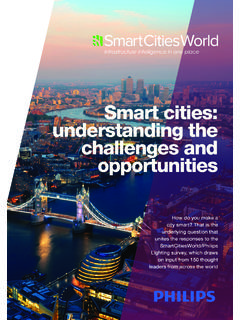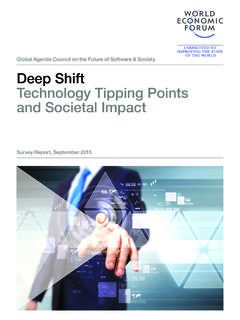Transcription of Summer 2019
1 Draft strategy for consultation Summer 2019. Contents Introduction 01. 01. Where we are now 03. 02. The challenges ahead 05. 03. A vision for what we want to achieve 06. 04. How we will achieve this vision 07. 05. The new strategy 09. 06. The outcomes 11. 07. The investment principles 15. 08. An arts council that is fit for the future 18. Introduction In December of this year Arts Council England will publish our next 10-year strategy. It will come into effect in 2020 and take over from our current strategy, Great Art and Culture for Everyone. The new strategy will extend and develop the Arts Council's support for our country's artists, curators and librarians, cultural organisations and their workforces, and the communities they serve. We start from a position of strength. From the national accomplishments of the 2012 Cultural Olympiad and the 14-18 NOW commemorations of the centenary of the first world war, to the local achievements of the Creative People and Places programme, the last 10 years have seen a flourishing of culture and creativity in this country.
2 Cultural organisations and artists have risen to the challenges presented by the economic uncertainty of austerity and continued to make outstanding work. So why does the Arts Council need a new strategy? The short answer is that, in the years since 2010, the world has changed. Economically, technologically, socially and environmentally, the last decade has been a period of significant transformation and there is every indication that over the next decade that transformation will accelerate. In such a rapidly shifting landscape we cannot continue to operate in the ways we always have done. We need to change with the world, as it changes. We need to think and work creatively to overcome the challenges , and make the most of the opportunities, that such change brings. And we need to go further in addressing old challenges , as well as readying ourselves to meet new ones.
3 We are proud of the arts and culture that we support today. But while our original strategy made strides in bringing arts and culture to people around the country, too many gaps remain. Inequality of access to publicly funded culture still exists across our country; for children and young people, opportunities to experience culture and creativity often depend on background and postcode; and throughout our sector a lack of diversity persists. It's time to bridge these gaps: to support and celebrate the cultural and creative lives of everyone in England. With the strategy that we are proposing here, we are looking to shape a country that encourages every one of us to express our creativity: for the joy, satisfaction and wellbeing that living a creative life brings, and for the way in which creativity and the culture that comes from it allow us both to adapt to our world and to adapt it; to change, and to make the changes that we want to see.
4 We are looking to the future, and to ways we can support artists and cultural organisations to evolve to meet new challenges as effectively as possible: through improving their environmental sustainability; through building better, nimbler business models; and through innovating and taking risks in all areas of their work in order to create inspiring, entertaining and moving cultural experiences. We want communities in villages, towns and cities up and down the country to experience the benefits of investment in culture, and we want to support children and young people to develop their creative potential to the full. We intend to make sure that the doors are open for the finest, most exciting artists and cultural leaders, no matter where they come from, to step through. The document you have in front of you today is not the Arts Council's next 10- year strategy; rather it is a draft of that strategy.
5 It is built on the evidence we 1. have gathered, including extensive consultation with the public, our partners and stakeholders, creative practitioners and cultural organisations. But in order to turn this draft strategy into a finished one, we need to ask, once again, for your help. We want you to tell us whether we've got it right and how, in your view, the challenges raised might best be met. We also want to hear from you about what should be in the delivery plans published over the course of the decade, which will set out in more detail how we intend to realise our outcomes in each period. This is a strategy that has partnership at its heart, and the first piece of partnership working starts here. Your contributions now will ensure that our next 10-year strategy is smart, robust and ambitious enough to carry us all through the decade to come.
6 About DEFINITION: Arts Council Creativity We use creativity' to mean the process through England which people apply their knowledge and intuition to make, express or imagine something new or individual to the creator. Creativity is present in all Arts Council England was established by Royal domains of life. For this strategy, the Arts Council Charter in 1946 to champion and develop arts and is most concerned with the creativity associated culture across the country. We are an independent with the making of culture'. charity as well as an arms-length non-departmental public body, and are accountable to the Department for Digital, Culture, Media and Sport (DCMS). We were established as a distributor of National Lottery DEFINITION: Culture funds under The National Lottery Act 1993. In 2011 we expanded our responsibilities to include the support and development of museums and Culture' means many things to many people and libraries, alongside the arts.
7 We are tasked with is regularly used to refer to food, religion and other various statutory UK-wide responsibilities that forms of heritage. In this strategy we use culture enable objects and collections of special interest to mean all those areas of activity associated to be acquired, shared and protected for long-term with the artforms and organisations that Arts public benefit. We also work with the Department Council England supports: collections, combined for Education to deliver a network of Music arts, dance, libraries, literature, museums, music, Education Hubs, ensuring every child in this country theatre and the visual arts. However, as the advent has access to a high-quality music education. of new technologies and other societal changes alter the way that many artists, curators, librarians Our main sources of income are Grant-in-Aid that and other practitioners work, as well as the ways is, the money we receive directly from government in which culture is made and shared, the traditional and National Lottery funding.
8 Our remit is to use boundaries between and around cultural activities all these funds in the public interest to support arts are disappearing, and we expect this to accelerate and culture as a whole. over the next decade. We are excited by these changes and expect to evolve the types of cultural activities that we will support over the next decade. 2. 01. Where we are now We are now nearing the end of the period covered by Arts Council England's first 10-year strategy, Great Art and Culture for Everyone. Presented in the autumn of 2010, the strategy's aim was simple: to build for the first time, with the public and our partners, a shared vision and a joint set of priorities to support and develop arts and culture in this country. At its centre were five clear goals designed to guide our investment and development work for the following decade: that excellence would thrive and be celebrated in the arts, museums and libraries; that everyone would have the opportunity to experience and be inspired by them; that artistic organisations, museums and libraries would be resilient and environmentally sustainable; that their leadership and workforce would be diverse and appropriately skilled; and that every child and young person would have the opportunity to experience their richness.
9 The strategy clarified the Arts Council's role, purpose and aspirations: to ourselves, to our partners, to policymakers and the public. Its launch coincided with an era of austerity in which funding for arts and culture from local and national government contracted, but the shared goals and strong partnerships which the strategy enabled allowed us to support artists and cultural organisations to develop, even in challenging economic circumstances. It gave a clear rationale for our investment and allowed us to work with others so that great arts and culture could be made, experienced and appreciated by as many people as possible. The successes of that first strategy have been significant. England's artists continue to flourish at home and on the world stage, and are vital sources of talent and enterprise for our country's creative industries, which are major drivers of the national economy.
10 Communities around the country have benefitted from investment in culture. Our cultural organisations have responded boldly to the economic challenges of the last 10 years, increasing earnings and developing new revenue streams to counter the impacts of reduced public funding, while at the same time improving their environmental sustainability and beginning to expand the diversity of their teams and the work they produce. As a result of all of this, there is now a much clearer understanding of the role that the arts, museums and libraries can play in building the identity and prosperity of places, creating stronger communities and enriching people's lives. And yet there is more to be done. As we prepared for this new strategy we set out to understand how we could build on the achievements of the last, and achieve greater success in the areas where challenges remain.





